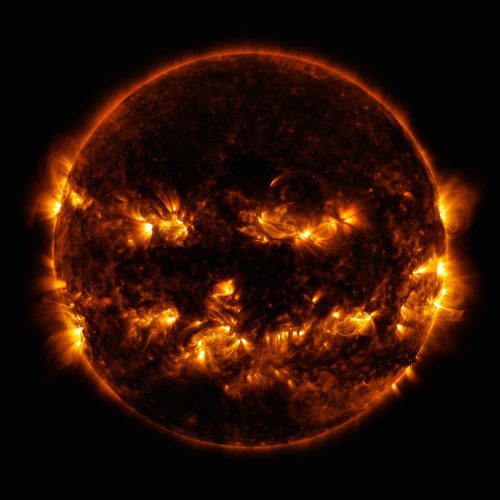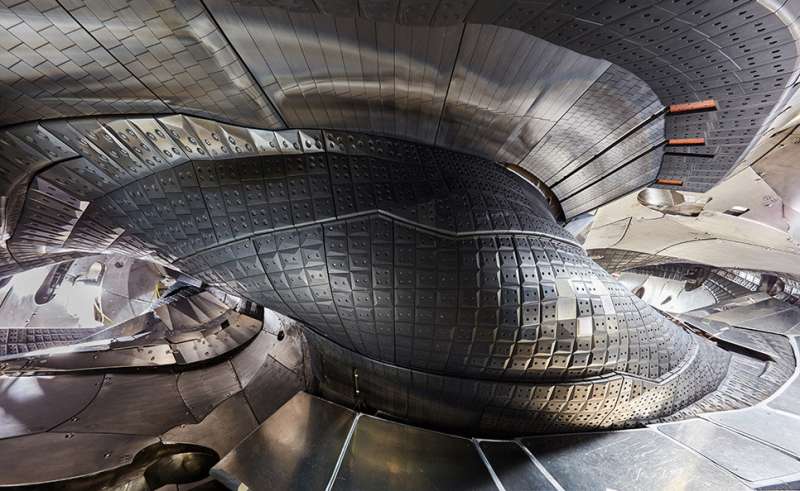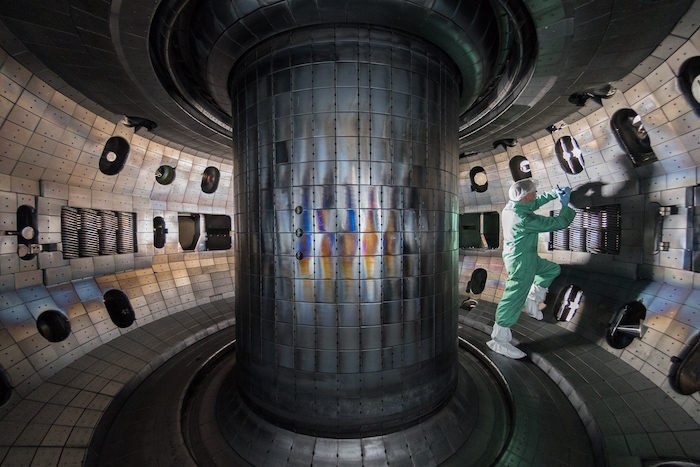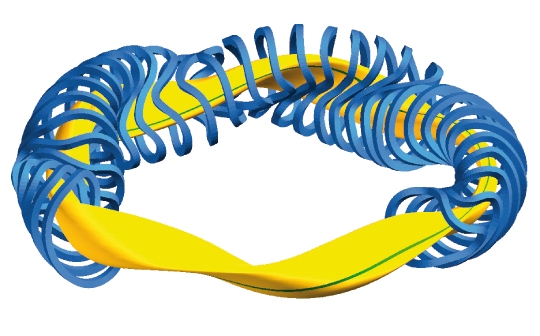In the world of nuclear power (which is used to create electricity), fusion reactors are powerful, create next-to-no radioactive waste, and the fuel they require—hydrogen—is everywhere and is the most basic element in the universe.
But fusion reactors practically don't exist. Yes, there are prototype models, but currently there are no designs where a fusion reactor actually makes more energy than it needs just to get started. That's a problem!
But a new innovation is getting us closer to changing that. Physicists have managed to adjust a device known as a stellarator to the point where it can better contain and control the energy created in fusion. It's not perfect yet, but it's a big step.
Before we take a look at how a stellarator works, let's zero in on what makes fusion different from the methods that nuclear power plants use today, and how it happens. (This is a really complex topic, so hold on to your hats!)
Fission versus fusion
The Bruce Nuclear Plant is a long-standing power plant in Ontario. (Getty Embed)
Though there are slightly different types of nuclear power stations out there, they all use the same basic type of nuclear reaction.
Fission, or atom breaking.
In this case, high-speed electrons are fired at 'heavy' atoms (atoms with lots of particles in them), which cause the atoms to split. This split releases tremendous amounts of energy, which the plant converts into the electricity that powers cities.
Common here now, rare everywhere else
Fission is now fairly common but it doesn't occur naturally. Instead, the universe is run on a totally different kind of nuclear reaction.
And that is fusion, or the bonding together of atoms. In fusion, smaller atoms are fused together to form heavier elements. For an example of a fusion reaction and its powers, you only need to look up during the day. Yep, that's right. The Sun is a fusion reactor. And so is every star.
In fact, every second the Sun is fusing together 500 million metric tons of hydrogen atoms into helium. And as you can tell, that releases an unbelievable amount of energy!
Come together

Meet your friendly neighbourhood fusion reactor—the Sun! (NASA)
The tricky thing about fusion is that atoms do NOT normally like to do it. In fact, thanks to the positively charged particles—called protons—at their centre, they will do everything they can to avoid it. You can think of this in the same way as when you try to push the same ends (such as the two '+' ends) of a pair of magnets together. They push away from each other and it takes a lot of pushing to get them to touch.
In a star, that 'pushing' is done by the pressure found in its core. And when it does happen... look out! This is why fusion reactors need so much power to get rolling. The machine is trying to recreate the same amount of pressure that you would find in the middle of the Sun!
A greater stellarator

The twisted interior of the Wendelstein 7-X stellarator in Germany. (Bernhard Ludewig/Max Planck Institute of Plasma Physics)
We're now ready to talk about the stellarator! Engineers have built a few machines capable of a fusion reaction. These hold a circular flow of plasma—super-heated matter—where the fusion can take place. One of these machines is a doughnut-shaped chamber called a tokamak. We actually wrote about new tokamak prototype—called the SPARC—last fall.

Inside a tokamak reactor. (Wikimedia Commons)
Another machine is the stellarator is also shaped like a doughnut, but more twisted.
Stellarators use a complex layout of magnets that channel the circular flow of plasma inside the reactor. These machines were actually first invented in the 1950s—their biggest issue has always been heat loss. They simply cannot contain the heat generated by the fusion reaction, and so much of that energy is lost before it can be used to generate power.

The blue rings are the giant magnets of a stellarator. The yellow is the flow of plasma. (Wikimedia Commons)
But work done on the Wendelstein 7-X stellarator in Germany have yielded impressive results. Recent tests have shown that the reactor can contain temperatures that are twice as hot as the core of the Sun. So really, really hot.
Keeping it consistent
So let's get ready for fusion power, right? Nope, not yet. The key to sustainable power from fusion isn't just being able to contain super hot temperatures. After all, earlier this year, a Chinese tokamak called EAST reached eight times the temperature of the Sun! But it could only hold it for a little over a minute.
This is where the stellarator is interesting. Though it can't hold on to temperatures that are as high as tokamaks, its complex pattern of magnets is able to keep the plasma flowing much longer. If you can keep that flow going and contain the heat and energy, you can make a fusion power plant.
It's still something that human technology hasn't mastered. But each innovation brings us closer to a really exciting possible future—especially in a world anxious to find new ways to generate its energy.
 Fusion is the most powerful and most ancient power in the universe. But it's still something humans haven't controlled. (ID 31465 © Mval | Dreamstime.com)
Fusion is the most powerful and most ancient power in the universe. But it's still something humans haven't controlled. (ID 31465 © Mval | Dreamstime.com)









